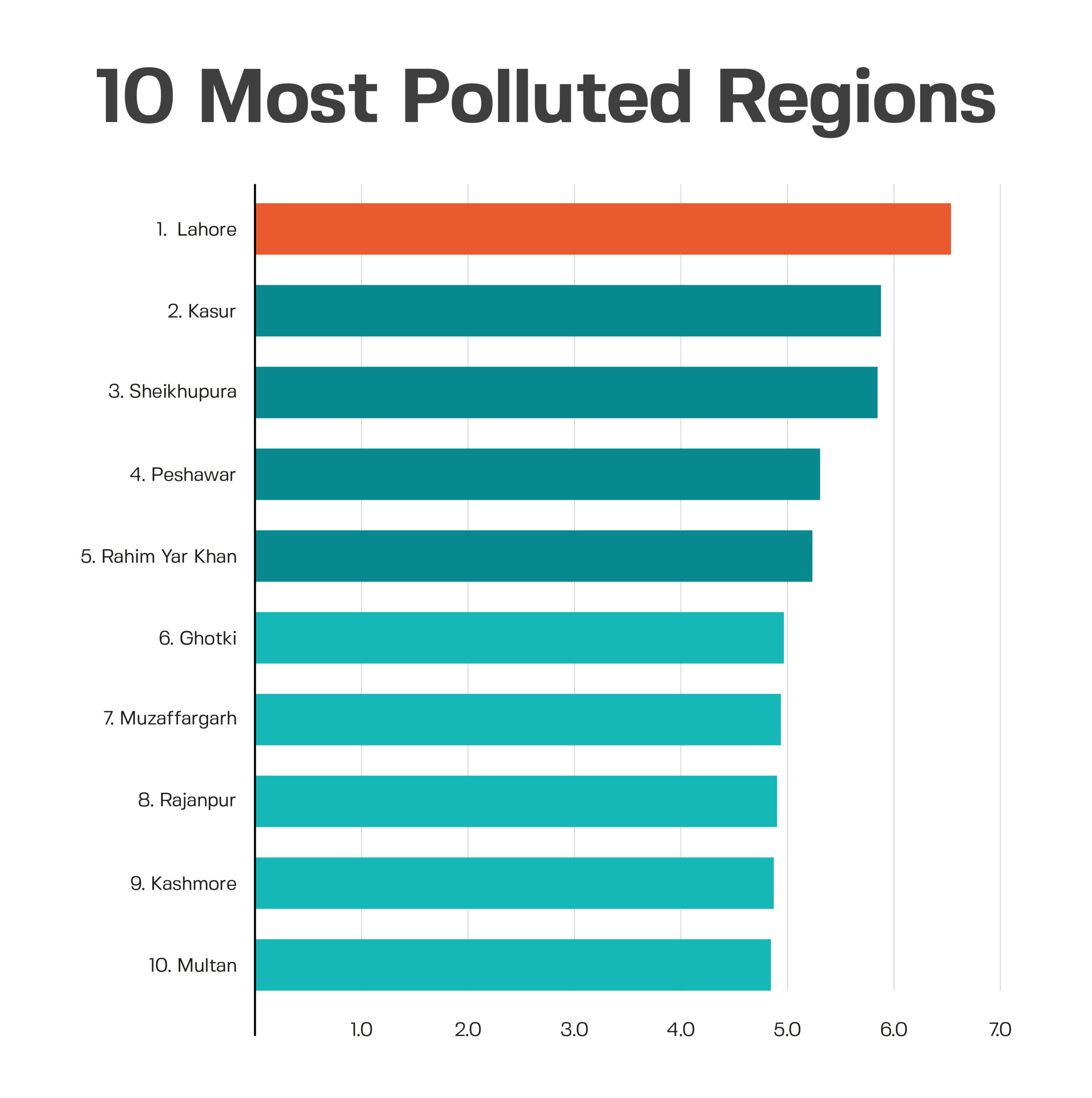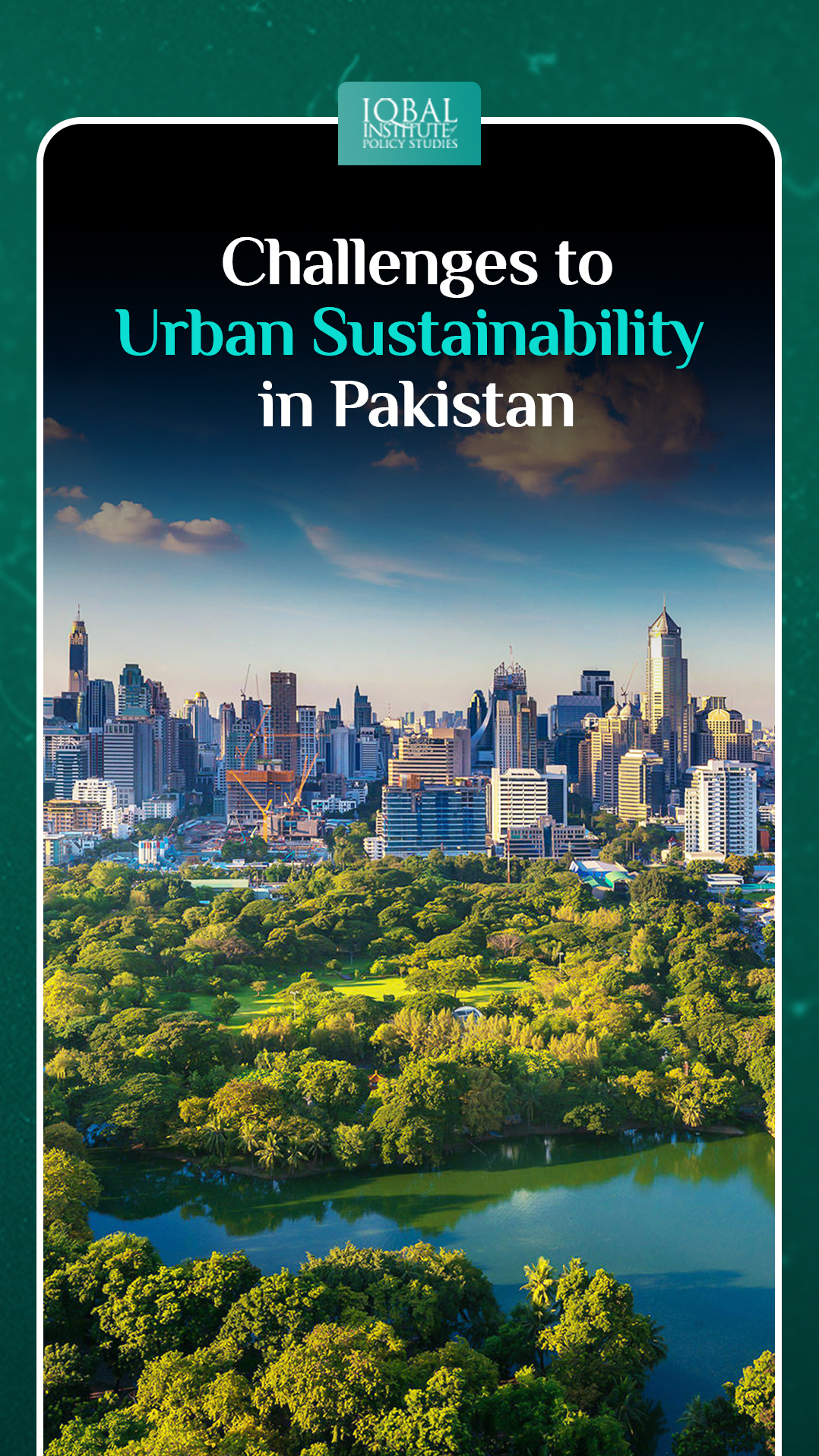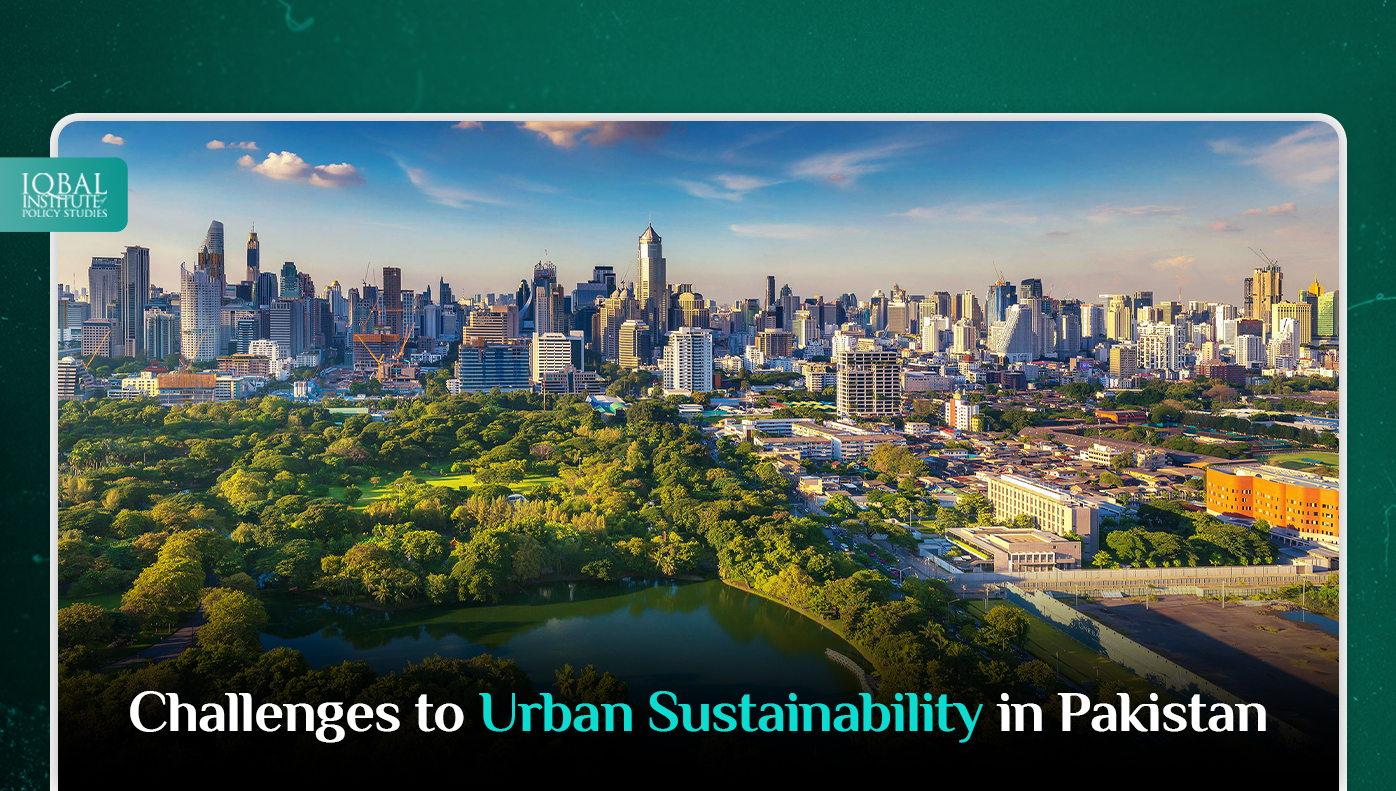Overview of the Urban Situation in Pakistan
Pakistan is the fifth most populous country globally. Urbanisation is increasing at a rate of 2.7% annually (PBS, 2017). The rapid increase in urban population is due to rural-to-urban migration (Arif, 2019). As per the official consensus, the rate of urbanisation was 37% in 2020, and it is expected to increase to 50% by 2050. The official estimates are largely considered an underestimation. The World Bank estimates that the rate of urbanisation in Pakistan is 56%. It reflects that the rate of urbanisation is increasing devastatingly.
With the increase in population, the need for resources is also increasing. It will lead to urban instability due to the over-exploitation of resources. If checks and balances are not implemented, malpractice and inequality will increase. Without implementing policy and reforms, the industrialist and citizens will not take responsibility for their actions.
Challenges that Affected Urban Sustainability
Suburban Sprawl
Suburban sprawl is defined as unrestricted growth outside the urban areas. It is a sudden expansion in the geographic extent of cities and towns, often characterised by low-density residential housing, single-use zoning and increased reliance on the private automobile for transportation.
The urban population in Pakistan increased from 17.7% to 36.4% between 1951 and 2017. The study has analysed the pattern of urban growth in the ten most populous cities, which depicted that population growth in a rural area is higher than in the urban area. This trend indicates that cities are expanding more rapidly outside their municipal boundaries due to urban sprawl or leapfrog development. The outskirts of these cities have become their newly added urban transition areas but remain classified as rural in the official count. Suburban sprawl promotes deregulated, unsustainable urban development, conversion of rural farmland, and car dependency.
Waste Disposal and Sanitation
Proper waste disposal and sewerage have a profound impact on human health. The government of Pakistan formed the National Sanitation Policy in 2006 with the objective of improving the quality of life of the people. However, the execution process of policy has failed to implement its objectives. Pakistan is among the top 10 worst countries in terms of sanitation. According to the World Bank report, only 68% of Pakistanis have access to basic sanitation facilities. The poor sanitation conditions are affecting the health of individuals and children, leaving them with diarrhoea and other water-borne hazards (Reliefweb, 2022). Pakistan has the third-highest diarrhoea mortality burden, with 39,500 deaths in children less than 5 years of age (Sadiq et al., 2022).
Air Quality
Pakistan is the fourth most polluted country in the world out of 240 countries (AQLI, 2021). The increase in air pollution is due to a rapid rise in the population, urbanisation and industrialisation. Nonetheless, burning solid fossil fuels for basic needs like cooking, heating, and light increases air pollution. Only the transportation sector emits 25% of carbon emissions in Pakistan (Saleem,2021). The situation of air pollution in Pakistan is becoming worse than smoking, tuberculosis and unsafe water and sanitation. Children’s health is more vulnerable than that of adults, as air pollution causes 1 in 10 deaths of children under the age of five (Iqbal et al., 2019).
 Water Quality
Water Quality
The poor water quality and water scarcity are affecting the population’s well-being. In May 2018, the Pakistan Council of Research in Water Resources (PCRWR) reported that there would be very little or no clean water available in the country (Shukla, 2018). Only 20% of the country’s population can access clean drinking water. The remaining people have no other option but to drink polluted water primarily contaminated by solid waste and secondarily contaminated by fertiliser, pesticides, and industrial effluents. This type of water pollution increases death and disease (Daud et al., 2017).
Climate Change
Pakistan is highly vulnerable to climate change. The floods in 2022 damaged more than 8,000 miles of roads, 410 bridges and a total or partially 2.1 million homes (CDP, 2022). As per Canada Communicable Disease Report (CCDR), the risk of extreme climate-related events, air pollution and environmental degradation is projected to reduce the GDP by 10 to 20% by 2025. The percentage of the population of Pakistan living in urban areas will increase from 37% in 2020 to 50% in 2050 and is highly exposed to climate change and pollution (World Economic Forum, 2022)
Energy Use
It was anticipated that the number of people living in cities would increase by 2030. To make cities sustainable, it is important to implement SDG 7 (ensure access to affordable, reliable, sustainable and modern energy for all). Pakistan has acquired most of its electricity from fossil fuels, leading to a severe energy crisis and fewer reserves. It is difficult to purchase fuel from different countries due to financial constraints. Apart from this, other issues are increasing the energy security problem: increases in the price of fuel, price shocks and supply disruptions. This government has changed its focus to producing energy from renewable sources, i.e., wind, solar etc. and encourages the making of such infrastructure that is energy efficient (Qayyum, 2022).
Ecological Foot Print of Cities
The ecological footprint measures how fast we consume resources and generate waste compared to how fast nature can absorb and create resources. The factors usually measure the ecological footprint are the water area needed to produce resources and biologically productive land. Pakistan is among the scarce ecological countries, meaning that we have consumed more than we have (Khan & Hussain, 2013).
Industrial Pollution
Most industries are located in cities around the world. It is found that industries are the main source of increasing pollution in rivers, streams, and seas through toxic material discharging. As per the report, only 1% of the wastewater in Pakistan is treated (GoP, 2017). The increase in industrial pollution is because of the lack of implementation of industrial policy, an industrial environment that is not encouraging to treat industrial waste, and a lack of policies to reuse the waste materials (Mehdi, 2019). Moreover, lack of regulation and illegal dumping of waste material are the reasons behind the greater dispersion of pollutants.
What Cities Can Do?
It is important to make zoning codes, infrastructure provisions, building codes and permitting processes, and cities that encourage affordable building designs that save energy and resources.
Government should take initiatives that can encourage and catalyse inclusive economic development in low-energy, zero-carbon directions by incentivising businesses.
The government, its agencies, and concerned authorities should work together to improve the sewerage system and drinking water quality to save lives.
To ensure cities become more liveable, urgent reforms are needed for more integrated land use planning and increased investments in municipal services and in, energy efficiency and clean transportation. To formulate this, strong municipal governments and the expansion of city finances via property taxation are critical.
Innovation and transformation are needed in the energy sector so that Pakistan will produce energy through renewable energy sources, which are cost-effective and environment friendly.
To improve the city structure, authorities must invest in green cities such as low-carbon transport, parks, eco-industrial complexes, energy-efficient buildings and an e-governance system.
To build resilient cities, the government has to invest in climate-smart infrastructure and encourage ESG strategies.
There is a need to focus on a representative local governance system, the use of data collected through conventional and modern technologies for planning and management, and the adoption of a visionary and inclusive approach are fundamental prerequisites to realise the true economic potential of cities.
Conclusion
To fully utilise the true dividend of the city, a major paradigm shift in industries is required. Cities have the potential to contribute to economic growth. However, urban sustainability has several challenges, including urban sprawl, air pollution, water pollution, waste disposal, ecological carbon footprints, etc. There is a need to use a bottom-up approach to develop sustainable cities, and the government should make efficient reforms to implement policies.
References
AQLI. (2022). Pakistan Pollution Ranking. Retrieved from Air Quality Life Index: https://aqli.epic.uchicago.edu/country-spotlight/pakistan/
Arif, G. (2019). Urbanization, city growth and quality of life in Pakistan. European Journal of Social Sciences, 196-215.
CDP. (2022). 2022 Pakistan Floods. Retrieved from Disaster Philanthropy: https://disasterphilanthropy.org/disasters/2022-pakistan-floods/#:~:text=Public%20infrastructure&text=Sindh%20province%20is%20the%20most,damage%E2%80%9D%20to%20Pakistan’s%20rail%20network.
Daud et al. (2017). Drinking water quality status and contamination in Pakistan. BioMed Res Int .
GoP. (2017). Brief on Water Pollution. Government of Pakistan. Retrieved from https://environment.gov.pk/SiteImage/Misc/files/Downloads/interventions/environmentalissues/WaterPollution.pdf
Iqbal et al. . (2019). Why Pakistan needs to deal with air pollution on an emergency footing. Retrieved from Dawn: https://www.dawn.com/news/1521879#:~:text=A%20vast%20majority%20of%20the,homes%2C%20and%20especially%20to%20children.
Khan, U., & Hussain, A. (2013). Analysis of Ecological Footprint of Rural-Urban Households. PDR.
Mehdi, A. (2019). Industrial pollution in Pakistan. Retrieved from Nation.com: https://www.nation.com.pk/07-Jan-2019/industrial-pollution-in-pakistan#:~:text=More%20than%20six%2Dand%E2%80%93a,of%20city%20water%20is%20contaminated.
Qayyum, S. (2022). Pakistan needs immediate steps to improve energy efficiency. Retrieved from The Third Pole: https://www.thethirdpole.net/en/energy/opinion-pakistan-needs-immediate-steps-improve-energy-efficiency/#:~:text=Pakistan’s%20energy%20problems%20are%20not,sustained%20exorbitantly%20high%20energy%20costs.
Reliefweb. (2022). Sanitation Crises in Pakistan. Relief Web.
Sadiq et al. (2022). Risk factors for acute diarrhoea in children between 0 and 23 months of age in a peri-urban district of Pakistan: a matched case–control study. Internation Health.
Shukla, V. (2018). Pakistan’s alarming water crisis: country to run out of clean water By 2025. Politics. Retrieved from Value walk: https://www.valuewalk.com/2018/05/pakistan-water-crisis-clean-water-2025/
World Economic Forum. (2022, November). Pakistan Urgently Needs Significant Investments in Climate Resilience to Secure its Economy and Reduce Poverty. Retrieved from The World Bank: https://www.worldbank.org/en/news/press-release/2022/11/10/pakistan-urgently-needs-significant-investments-in-climate-resilience-to-secure-its-economy-and-reduce-poverty#:~:text=The%20CCDR%20notes%20that%20the,economic%20development%20and%20poverty%20redu



Leave a Reply